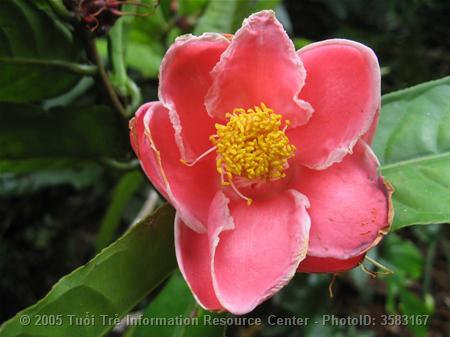Scientists from central Vietnam’s Khanh Hoa province have proposed that a subspecies of “tra” flower, which hasn’t been found since 1949 until recently, be conserved as one of the country’s rare floral breeds.
After dozens of years, the Krempf “tra” flower, scientifically termed Camellia Krempfii, has first been rediscovered in the province in mid 2013 in limited number.
The “tra” flower plant can reach the height of 8m and yields red flowers which measure 5-7cm in diameter.
The plant, which is endemic to Vietnam, typically grows in limited number in tropical rainforests and scatters at the 700-800m height.
A source of rare genes, the Krempf “tra” flower boasts rare genes and can be proposed to be listed in the Red Book of endangered species to facilitate research, breeding and culturing.
According to the Khanh Hoa Department of Science and Technology, a single individual of the plant was first rediscovered by researchers from the Southern Ecological Institute in Hon Ba Mount in mid 2013, but the plant didn’t yield flowers then.
In November 2013, the researchers discovered another individual at Son Thai Mount in Khanh Vinh District, some 6km from the Hon Ba Wildlife Reserve.
This time they managed to collect both its flowers and nuts, which allowed in-depth research into the plant.
Not long after that, researchers from the Nui Ba Piduop National Park in the Central Highlands province of Lam Dong and Da Lat University also announced their finding of the Krempf flower at Hon Giao Pass, adjacent to Khanh Hoa province.
The plant was announced and named by French biologist F. Gagnepain in 1942. It hasn’t been found in the wild since 1949.
Earlier this year, “Camellia longii”, another subspecies of “tra” flower, which was discovered for the first time in the world and named by the Swedish scientific magazine Nordic Journal of Botany, was recognized as one of the world’s new species.
According to Nordic Journal of Botany, the new breed, spotted in the Cat Tien National Park in southern Vietnam in 2011, is locally endemic and increasingly threatened by local hydropower projects which may do irreparable harm to its habitat.
Like us on Facebook or follow us on Twitter to get the latest news about Vietnam!


















































